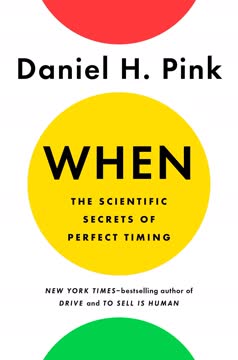Key Takeaways
1. The Brain: A Physical Marvel of Fat, Water, and Cells
On average, an adult human brain weighs 2.6–3.1 lb (1.2–1.4 kg), which is approximately 2 percent of total body weight.
Composition and Structure: The brain, a soft, pinkish-gray organ, is primarily composed of fat (60%), water (73%), and a vast network of cells. It weighs about 2% of the body's total weight, yet it consumes 20% of the body's energy. This complex organ is not a homogenous mass but rather a collection of over 300 interconnected regions, each with specialized functions.
Cellular Basis: The brain's functionality stems from approximately 160 billion cells, half of which are neurons (nerve cells) and half glia (support cells). Neurons transmit electrical signals, while glia provide support, insulation, and protection. These cells are organized into gray matter (neuron cell bodies) and white matter (myelinated axons), which facilitate communication within the brain.
Left vs. Right Brain Myth: The idea that one side of the brain dominates the other is an oversimplification. While some functions are lateralized (e.g., speech centers on the left), most mental tasks involve both hemispheres working together. The brain is a highly interconnected network, not a collection of isolated parts.
2. The Nervous System: The Body's Intricate Communication Network
The total length of the somatic nervous system is about 45 miles (72 km).
Central and Peripheral Systems: The nervous system is divided into the central nervous system (CNS), comprising the brain and spinal cord, and the peripheral nervous system (PNS), which permeates the rest of the body. The PNS is further divided into the somatic (voluntary movements) and autonomic (involuntary functions) systems.
Spinal and Cranial Nerves: Spinal nerves connect the CNS to the body, carrying sensory data to the brain and motor signals back. Cranial nerves connect directly to the brain, serving the eyes, ears, nose, tongue, and facial muscles. The vagus nerve, a cranial nerve, links directly to the heart, lungs, and digestive organs.
Autonomic Control: The autonomic nervous system maintains internal conditions through the sympathetic (fight-or-flight) and parasympathetic (rest-and-digest) systems. These systems regulate involuntary functions such as heart rate, breathing, and digestion, ensuring the body's internal environment remains stable.
3. Senses: How the Brain Perceives the World
The brain filters out a great deal of sensory data deemed irrelevant.
Sensory Processing: The brain processes sensory information from the eyes, ears, nose, tongue, and skin to create a detailed picture of the body's surroundings. This involves converting physical stimuli into electrical signals that the brain can interpret. The brain also filters out irrelevant sensory data, focusing on what is deemed important.
The Five Senses: Each sense has its own set of receptors and dedicated processing areas in the brain. Sight involves the retina converting light into electrical signals, hearing involves the cochlea converting sound waves, smell involves olfactory receptors, taste involves taste buds, and touch involves receptors in the skin. Proprioception, the sense of body position, is also crucial.
Synesthesia and Sensory Overlap: Synesthesia is a condition where a stimulus is interpreted by multiple senses simultaneously. Sensory information is processed in specific areas of the cortex, but these areas can sometimes react to inputs from other senses, highlighting the interconnected nature of sensory perception.
4. Memory: Encoding, Storing, and Recalling Experiences
The function of memory is to aid future survival by encoding useful information from the past.
Encoding and Storage: Memory involves encoding information, storing it, and then recalling it. The hippocampus is crucial for forming new episodic memories, while the cortex is where long-term memories are stored. Repeated activation of neural pathways strengthens connections, a process called long-term potentiation.
Types of Memory: Memory is divided into short-term and long-term memory. Long-term memory is further divided into declarative (explicit) and nondeclarative (implicit) memory. Declarative memory includes episodic (personal events) and semantic (general knowledge) memory, while nondeclarative memory includes procedural (skills) memory.
Recall and Forgetting: Recalling a memory involves reactivating the neural network that stores it. This process can be influenced by cues, emotions, and the context in which the memory was formed. Forgetting can occur due to decay, interference from other memories, or an inability to access the memory.
5. Emotions: The Brain's Response to the World
Most theories of emotion suggest that they are preordained modes of behavior that boost our survival chances when we encounter confusing or dangerous situations.
Physiological and Psychological Responses: Emotions are complex physiological and psychological responses to external events. They involve changes in heart rate, blood flow, and muscle tension, as well as subjective feelings. Emotions are thought to have evolved to enhance survival by prompting appropriate responses to various situations.
Basic Emotions: Research suggests that there are four basic emotions: anger, fear, happiness, and sadness. Other emotions are thought to be combinations of these. The limbic system, particularly the amygdala and hypothalamus, plays a key role in processing emotions.
Reward and Punishment: The limbic system is closely linked to feelings of pleasure and disgust. Reward centers, particularly in the hypothalamus, are activated by dopamine, creating a drive to repeat behaviors that trigger feelings of reward. Punishment centers create a basic response to experiences, helping us learn what to avoid.
6. The Self: A Complex Construction of Identity and Awareness
The self is where thought and imagination take place.
Physical and Mental Self: The self is a complex concept that includes our physical self (our awareness of our body) and our mental self (our autobiographical memory and sense of identity). The brain integrates sensory information, memories, and emotions to create a sense of self.
Development of Self: Our sense of self develops over time, starting with a basic awareness of our own existence and progressing to a more complex understanding of our identity. This process is influenced by genetics, environment, and social interactions. The prefrontal cortex plays a key role in self-awareness and self-control.
The Mirror Test: The mirror test is used to determine whether an animal or human has a sense of self. The ability to recognize oneself in a mirror develops around two years of age in humans. This test highlights the complex cognitive processes involved in self-awareness.
7. Disorders: When the Brain's Systems Malfunction
Neither the publisher nor the author is engaged in rendering professional advice or services to the individual reader.
Headaches and Migraines: Headaches are a common symptom with various causes, including tension and stress. Migraines are severe headaches often accompanied by sensory disturbances, nausea, and vomiting. Both are thought to be caused by abnormal brain activity.
Neurological Disorders: Epilepsy is a condition characterized by recurrent seizures due to abnormal electrical activity in the brain. Meningitis and encephalitis are inflammatory diseases caused by infections that affect the brain and spinal cord. Parkinson's disease is a degenerative disorder that affects movement, while Huntington's disease is a genetic disorder that causes involuntary movements and cognitive decline.
Mental Health Disorders: Schizophrenia is a psychotic disorder characterized by delusions and hallucinations. Anxiety disorders involve excessive feelings of fear and worry. Bipolar disorder is marked by alternating periods of mania and depression. Personality disorders involve inflexible and inappropriate behaviors. Addiction is a chronic dysfunction of the brain's reward system.
8. The Future Brain: Enhancing and Expanding Human Potential
The brain is plastic, meaning its cells and the connections between them can be reformed many times over as required.
Superhuman Senses: Technologies such as retinal and cochlear implants are restoring lost sensory function. Future versions may even expand our range of sensations. Electronic noses and artificial skin are also being developed to enhance our sensory capabilities.
Brain-Computer Interfaces: Bionic limbs and deep brain stimulation (DBS) are examples of technologies that interface directly with the brain. These technologies are being used to treat a range of disorders and may eventually be used to enhance normal brain functions.
The Global Brain: The concept of a brain/Cloud interface (B/CI) is being explored, which could allow human brains to connect to the internet and access vast amounts of information. This technology raises many ethical and practical questions about the future of human consciousness and intelligence.
Last updated:
Review Summary
How the Brain Works receives overwhelmingly positive reviews for its informative content and engaging visual presentation. Readers praise its comprehensive coverage of brain anatomy, functions, and disorders. Many find it accessible for beginners while providing valuable insights for those interested in neuroscience. The book's organization, illustrations, and simplified explanations of complex topics are highly appreciated. Some criticisms include outdated information and potential bias. Overall, most reviewers consider it an excellent resource for understanding the human brain.
Similar Books







Download PDF
Download EPUB
.epub digital book format is ideal for reading ebooks on phones, tablets, and e-readers.









